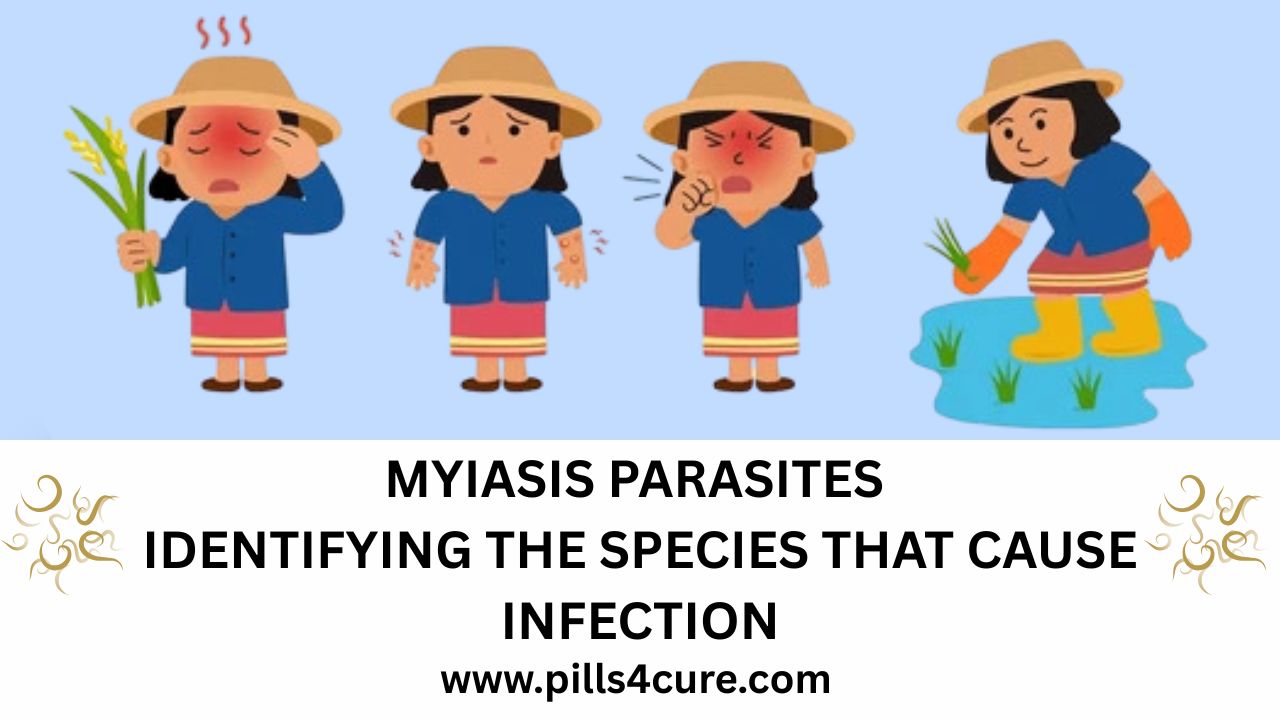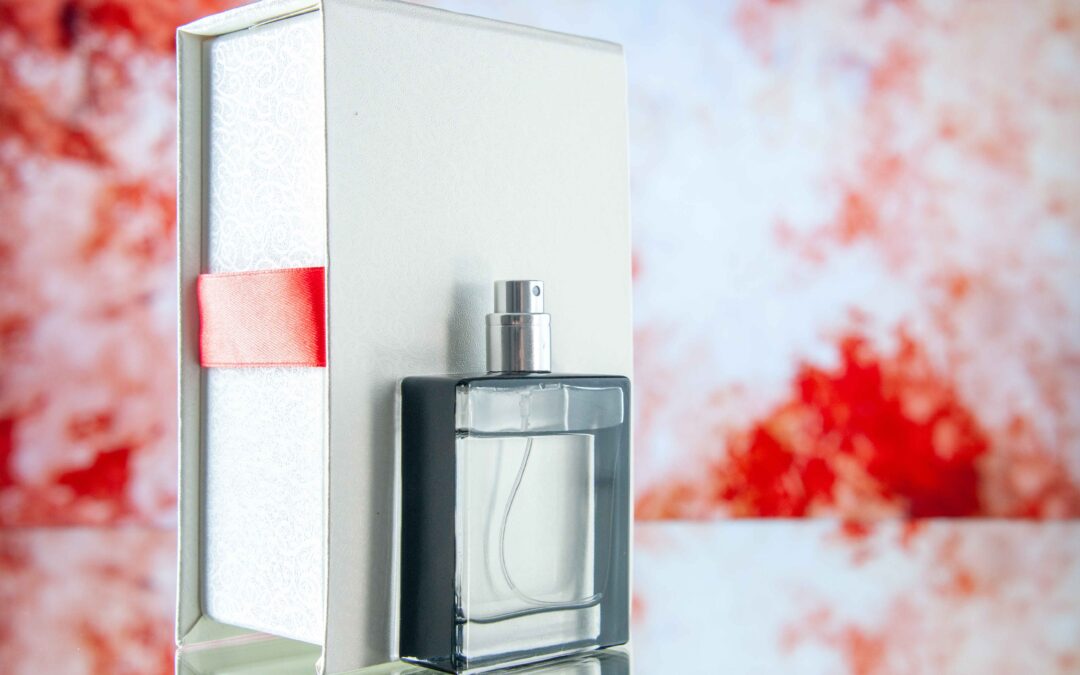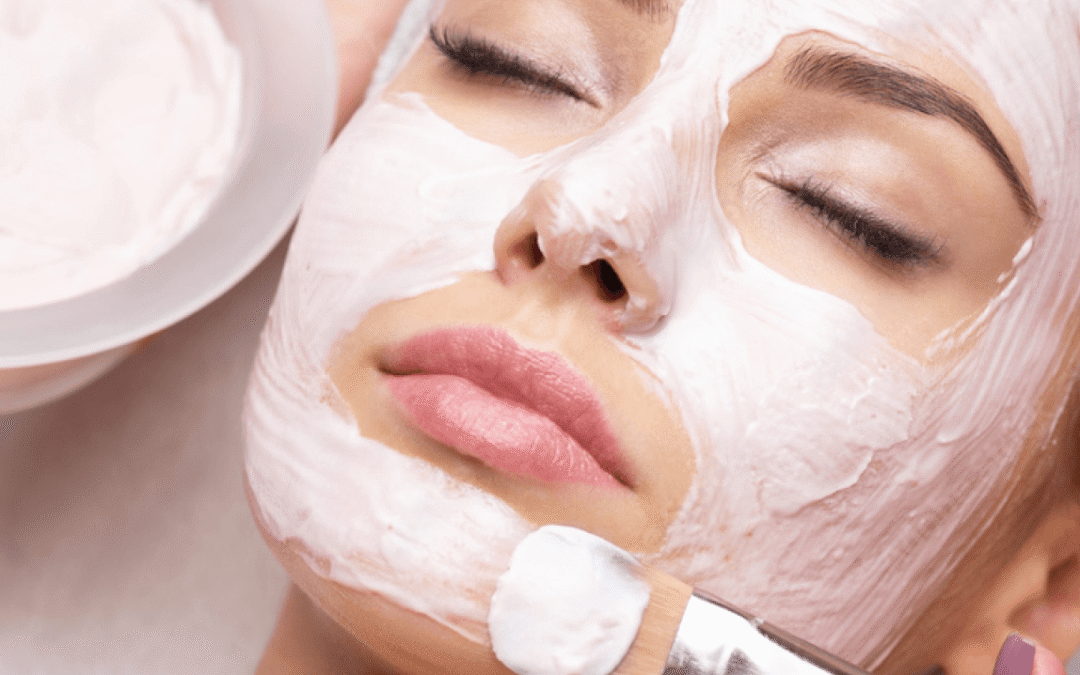Nasopharyngeal myiasis is a rare yet distressing parasitic condition that can affect individuals of any age or background. While it is more frequently reported in tropical and subtropical regions, cases have also been observed in temperate countries such as the UK and USA, often among travelers or those with certain underlying health issues. Recognizing the symptoms, understanding the causes, and knowing the available treatment options are essential for early detection and effective management. Today, medications like ivermectin pills and Iverhuman 6 MG have proven highly effective in treating this condition, offering reliable solutions for patients affected by nasopharyngeal myiasis.
What is Myiasis?
Before delving into the specifics of nasopharyngeal myiasis, it’s essential to understand the broader condition known as myiasis. Myiasis is a parasitic infestation that occurs when fly larvae, commonly known as maggots, invade living tissue in humans or animals. These larvae feed on the host’s dead or living tissue, body fluids, or ingested food, causing a range of symptoms depending on the location and severity of the infestation.
The condition derives its name from the Greek word “myia,” meaning fly. Various species of flies can cause myiasis, including botflies, screwworm flies, and blowflies. The severity of the infestation can range from a minor inconvenience to a serious medical emergency, particularly when vital areas such as the nasopharyngeal region are affected. Myiasis can occur in different parts of the body, including the skin, eyes, ears, and nasal passages, with each location presenting its own unique challenges and symptoms.
Understanding Nasopharyngeal Myiasis
Nasopharyngeal myiasis specifically refers to the infestation of fly larvae in the nasopharyngeal cavity, which encompasses the nose, throat, and the upper part of the pharynx behind the nasal cavity. This particular form of myiasis is considered one of the more serious types because of the proximity to vital structures and the potential for complications.
The condition typically begins when adult flies deposit their eggs or larvae directly into the nasal passages or nearby areas. The warm, moist environment of the nasopharyngeal region provides an ideal breeding ground for these parasites. As the larvae mature, they burrow deeper into the tissue, causing inflammation, tissue damage, and a cascade of uncomfortable symptoms. In severe cases, if left untreated, the larvae can cause significant destruction of soft tissue and even affect nearby bone structures.
What makes nasopharyngeal myiasis particularly concerning is that the symptoms can initially be mistaken for common respiratory infections or sinusitis, potentially delaying proper diagnosis and treatment. The condition requires prompt medical attention to prevent serious complications and ensure complete removal of all larvae.
Early Warning Signs of Nasopharyngeal Myiasis
Recognising the early signs of nasopharyngeal myiasis is crucial for timely intervention. The initial symptoms often develop gradually, making them easy to overlook or attribute to more common conditions. However, there are several characteristic warning signs that should prompt immediate medical evaluation.
One of the earliest indicators is a persistent sensation of movement or crawling inside the nose or throat. This unsettling feeling, often described as something “wriggling” or “tickling,” is caused by the active movement of the larvae within the nasal passages. Many patients report that this sensation intensifies when they lie down or during the night, which can significantly disrupt sleep patterns.
Another early sign is unexplained nasal irritation and frequent sneezing. The presence of foreign organisms triggers the body’s natural defence mechanisms, leading to repeated sneezing episodes as the body attempts to expel the intruders. This is often accompanied by a feeling of nasal obstruction or blockage that doesn’t respond to typical decongestants or antihistamines.
Unusual nasal discharge is also a common early symptom. Patients may notice discharge that appears bloodstained or has an unpleasant, foul odour. This occurs as the larvae feed on tissue and the body responds with inflammation and increased mucus production. Some individuals have even reported seeing small, white, worm-like creatures in their nasal discharge, which is often the moment that prompts urgent medical attention.
Symptoms of Myiasis in Humans
The symptoms of myiasis in humans vary considerably depending on the location and extent of the infestation. When we specifically examine myiasis symptoms in humans affecting the nasopharyngeal region, the presentation can be quite distinctive and progressively worsening if left unaddressed.
Patients with nasopharyngeal myiasis typically experience intense facial pain and pressure, particularly around the nose, forehead, and cheeks. This pain can be sharp and stabbing or present as a constant, throbbing discomfort that worsens throughout the day. The pain results from both the physical damage caused by the burrowing larvae and the inflammatory response triggered by their presence.
Nasal bleeding is another hallmark symptom that becomes more frequent as the condition progresses. The bleeding may start as minor spotting but can escalate to more significant episodes. This occurs because the larvae damage blood vessels as they feed on tissue and create tunnels within the nasal cavity. The bleeding is often more pronounced in the morning or after physical exertion.
Many patients report experiencing severe headaches that don’t respond to standard pain relief medications. These headaches are typically localised to the frontal region and can be accompanied by a feeling of fullness or pressure in the sinuses. The persistent inflammation and tissue damage contribute to these debilitating headaches, which can significantly impact daily functioning.
Difficulty breathing through the nose is a progressive symptom that worsens as the larvae multiply and tissue swelling increases. What begins as mild congestion can advance to complete nasal obstruction, forcing patients to breathe exclusively through their mouths. This mouth breathing can lead to secondary issues such as dry mouth, throat irritation, and disrupted sleep.
A particularly distressing symptom that some patients experience is a foul-smelling breath or nasal odour that others can detect. This malodorous smell results from tissue necrosis and bacterial infection that often accompanies the larval infestation. The combination of decaying tissue and bacterial byproducts creates a characteristic offensive odour that personal hygiene measures cannot eliminate.
Visual changes may occur in advanced cases, particularly if the infestation spreads to structures near the eyes. Patients might experience blurred vision, excessive tearing, or swelling around the orbital region. These symptoms indicate potential spread of the larvae and require immediate medical intervention to prevent serious complications.
Systemic symptoms can develop as the body mounts an immune response to the parasitic invasion. Fever, general malaise, and fatigue are common, particularly in more extensive infestations. Some patients report feeling unwell with flu-like symptoms that persist despite rest and standard treatments for viral infections.
Primary Causes of Nasopharyngeal Myiasis
Understanding the causes of nasopharyngeal myiasis helps in both prevention and early recognition of risk factors. The condition develops when flies from specific species deposit their eggs or larvae in or near the nasal passages, but several circumstances and conditions increase the likelihood of this occurring.
Poor hygiene and living conditions are significant risk factors for developing nasopharyngeal myiasis. Flies are naturally attracted to areas with inadequate sanitation, exposed food waste, and unsanitary conditions. Individuals living in or visiting areas with poor waste management systems face a higher risk of exposure to flies that can cause myiasis.
Pre-existing nasal conditions create an environment that’s more susceptible to fly infestation. Chronic sinusitis, nasal polyps, recent nasal surgery, or any condition that causes open wounds or chronic discharge in the nasal area can attract flies and provide an entry point for larvae. The moist, inflamed tissue in these conditions proves particularly attractive to egg-laying flies.
Agricultural and outdoor occupations expose individuals to higher concentrations of flies, particularly in rural areas. Farm workers, livestock handlers, and those who work extensively outdoors are at elevated risk. The combination of perspiration, outdoor exposure, and proximity to animals creates opportunities for flies to deposit eggs on the skin or near body orifices.
Compromised immune systems make individuals more vulnerable to developing myiasis and experiencing more severe symptoms. People with diabetes, malnutrition, cancer, or those taking immunosuppressive medications may not mount an adequate defence against the initial infestation, allowing it to progress more rapidly.
Sleeping outdoors or in areas without proper screens on windows and doors increases exposure to flies during vulnerable periods. Flies are often most active during dawn and dusk, and sleeping in unprotected areas during these times significantly raises the risk of infestation.
Travel to endemic regions is an increasingly common cause of nasopharyngeal myiasis in the UK and USA. Travellers to tropical and subtropical areas, particularly parts of Africa, Central and South America, and Southeast Asia, may encounter fly species that are more likely to cause myiasis. Without proper precautions, tourists and aid workers can return home with active infestations.
Alcohol abuse and substance use disorders correlate with higher rates of myiasis. Intoxicated individuals may sleep in unsafe locations, have reduced awareness of fly activity around them, and may have compromised personal hygiene, all of which increase vulnerability to infestation.
Essential Precautions to Prevent Nasopharyngeal Myiasis
Prevention remains the most effective strategy against nasopharyngeal myiasis. By implementing straightforward yet consistent preventive measures, individuals can significantly reduce their risk of developing this unpleasant condition, particularly when travelling to or living in high-risk areas.
Maintaining excellent personal hygiene forms the foundation of prevention. Regular bathing, keeping the face and nasal area clean, and promptly treating any facial wounds or sores removes the attractants that draw flies. Using mild soap and ensuring thorough drying of the face helps prevent the moist conditions that flies find appealing.
Using insect repellents containing DEET, picaridin, or other proven active ingredients provides an effective barrier against flies. When applying repellent, it’s important to follow the product instructions carefully and reapply as directed, especially after sweating or swimming. Whilst care should be taken to avoid direct application inside the nose, applying repellent to the surrounding facial area can deter flies from landing near the nasal openings.
Sleeping in protected environments is crucial, particularly in endemic areas. Using mosquito nets, preferably treated with insecticide, provides physical protection during sleep when individuals are most vulnerable. Ensuring windows and doors have properly fitted screens prevents flies from entering living spaces. If screens are damaged, repairing them promptly should be a priority.
Wearing appropriate clothing when outdoors in high-risk areas offers additional protection. Long sleeves, long trousers, and hats provide physical barriers that reduce skin exposure. Light-coloured clothing is preferable as it’s less attractive to many fly species and makes it easier to spot insects that may land on you.
Managing existing health conditions properly reduces vulnerability to myiasis. Keeping chronic nasal conditions well-controlled, maintaining good blood sugar levels if diabetic, and ensuring any nasal wounds heal properly all contribute to prevention. Regular check-ups with healthcare providers ensure underlying conditions don’t create opportunities for infestation.
Environmental management around the home significantly impacts fly populations. Properly disposing of rubbish, covering food waste, cleaning pet areas regularly, and eliminating standing water where flies breed all help reduce fly populations. In agricultural settings, proper manure management and animal waste disposal are essential preventive measures.
When travelling to regions where myiasis is common, researching the specific risks and taking appropriate precautions is essential. This might include booking accommodation with air conditioning or proper screening, avoiding areas with high fly populations during peak activity times, and being vigilant about unusual symptoms that develop during or after travel.
Educating oneself about the early symptoms of nasopharyngeal myiasis enables quick recognition and treatment. Being aware of what to look for means you’re more likely to seek medical attention promptly if symptoms develop, preventing progression to more severe stages.
Comprehensive Treatment Options for Nasopharyngeal Myiasis
Treatment of nasopharyngeal myiasis requires a multifaceted approach that addresses both the immediate removal of larvae and the management of associated inflammation and secondary infections. The myiasis treatment protocol varies depending on the severity of infestation, the patient’s overall health, and the specific fly species involved.
Manual removal of larvae represents the primary and most critical treatment step. This procedure must be performed by qualified medical professionals, typically ear, nose, and throat specialists, who have the appropriate equipment and expertise. Using specialised instruments such as forceps, suction devices, and endoscopes, doctors carefully extract all visible larvae from the nasopharyngeal cavity. This process can be time-consuming and may require multiple sessions to ensure complete removal, as larvae can burrow deep into tissue and hide in crevices.
Before and during the removal process, medical professionals often use substances that either kill the larvae or force them to emerge from the tissue. Topical applications of chloroform, turpentine, or specialised oils can be applied to the affected area. These substances block the larvae’s breathing apparatus, causing them to surface for air, making extraction easier. However, these methods must be used cautiously to avoid complications.
Ivermectin pills have emerged as a valuable pharmacological treatment option for myiasis, including nasopharyngeal infestations. Ivermectin works by paralysing and killing the larvae, making their removal easier and helping to eliminate any larvae that might not be immediately visible during manual extraction. The medication is typically administered as a single oral dose, though the exact dosage depends on the patient’s weight and the severity of the infestation.
Iverhuman 6 MG is one formulation of ivermectin that medical professionals may prescribe for treating myiasis. This antiparasitic medication has proven effective against various parasitic infections and has become a standard component of myiasis treatment protocols in many healthcare settings. The medication is generally well-tolerated, though patients should be aware of potential side effects and follow their doctor’s instructions precisely regarding dosage and timing.
Antibiotic therapy often accompanies the primary treatment to address secondary bacterial infections that commonly develop alongside myiasis. The tissue damage caused by larvae creates an entry point for bacteria, and the inflammatory environment promotes bacterial growth. Broad-spectrum antibiotics may be prescribed initially, with adjustments made based on culture results if infection is confirmed.
Pain management is an important aspect of treatment, as patients often experience significant discomfort during and after the removal process. Healthcare providers may prescribe analgesics ranging from paracetamol and ibuprofen for mild pain to stronger prescription medications for more severe cases. Managing pain adequately helps patients maintain nutrition and rest, both crucial for recovery.
Nasal irrigation with saline solutions helps cleanse the nasal passages after larvae removal, promoting healing and preventing secondary infection. This gentle washing removes debris, dead tissue, and any remaining eggs or small larvae. Patients are often instructed to continue saline irrigations at home as part of their recovery process.
Follow-up care is essential to ensure complete resolution of the infestation and to monitor for complications. Patients typically require several follow-up appointments where medical professionals examine the nasal cavity to confirm no larvae remain and that healing is progressing appropriately. Endoscopic examinations may be performed to visualise areas that aren’t accessible through standard examination.
In severe cases where significant tissue damage has occurred, reconstructive surgery may be necessary after the acute infection has resolved. This is relatively rare but can be required when larvae have caused extensive destruction of nasal structures or adjacent tissue.
Recovery and Long-term Outlook
Recovery from nasopharyngeal myiasis varies depending on the extent of the infestation and how quickly treatment was initiated. Most patients who receive prompt treatment experience complete recovery without lasting complications. The healing process typically takes several weeks, during which the damaged tissue repairs itself and inflammation subsides.
During the recovery period, patients should maintain excellent nasal hygiene and follow all prescribed medications and care instructions. Regular saline rinses help keep the nasal passages clean and promote healing. It’s important to attend all follow-up appointments to ensure the infestation has been completely eradicated and to catch any potential complications early.
Some patients may experience temporary changes in their sense of smell or taste during recovery. These alterations usually resolve as the tissue heals, though in cases of extensive tissue damage, some changes may persist. Scarring within the nasal cavity can occur in severe cases, potentially leading to long-term structural changes that might require additional intervention.
Psychological support may be beneficial for some patients, as the experience of having live larvae in one’s body can be deeply distressing. The sensation of movement, the extraction process, and the knowledge of the infestation can cause anxiety or trauma for some individuals. Speaking with a healthcare provider about these concerns is important, and counselling may be recommended in some cases.
Patients who have experienced nasopharyngeal myiasis should be particularly vigilant about prevention measures going forward, especially if they continue to live in or frequently visit endemic areas. Once you’ve had myiasis, you’re not immune to future infestations, making ongoing precautions essential.
When to Seek Immediate Medical Attention
Certain symptoms warrant immediate medical evaluation, as they may indicate severe infestation or complications. If you experience any sensation of movement within your nose or throat, especially if accompanied by visible larvae in your nasal discharge, you should seek medical attention promptly. Similarly, unexplained nasal bleeding that occurs frequently or is difficult to stop requires evaluation.
Severe facial pain, high fever, vision changes, or significant swelling around the eyes are red flags that suggest the infection may be spreading or causing serious complications. These symptoms require urgent medical assessment, potentially in an emergency department. Any sudden worsening of symptoms or development of neurological symptoms such as confusion, severe headache, or neck stiffness should prompt immediate medical care.
If you’ve recently travelled to regions where myiasis is common and develop unusual nasal symptoms, informing your healthcare provider of your travel history is crucial. They can then consider myiasis in their differential diagnosis and arrange appropriate examinations.
Frequently Asked Questions
Can nasopharyngeal myiasis resolve on its own without treatment?
No, nasopharyngeal myiasis will not resolve without medical intervention. The larvae will continue to feed on tissue and multiply if left untreated, potentially causing severe complications including tissue destruction, secondary bacterial infections, and spread to adjacent structures. Medical treatment is always necessary to remove the larvae and prevent serious outcomes.
How long does it take for symptoms to appear after initial infestation?
Symptoms typically begin within a few days to a week after the initial infestation, depending on the fly species and the number of larvae present. Some patients notice symptoms almost immediately, whilst others may not become aware of the problem until the larvae have grown larger and caused more significant tissue irritation.
Is nasopharyngeal myiasis contagious between people?
No, nasopharyngeal myiasis is not contagious from person to person. The condition can only develop when flies directly deposit eggs or larvae in or near the nasal passages. You cannot catch myiasis from being near someone who has it, nor can you spread it to others through contact.
Will I need to be hospitalised for treatment?
Hospitalisation depends on the severity of the infestation and the patient’s overall health status. Mild to moderate cases can often be treated in an outpatient setting, with the patient returning home after larvae removal. However, severe infestations, significant tissue damage, or the presence of complications may require hospital admission for more intensive treatment and monitoring.
Can myiasis affect other parts of the body simultaneously?
Yes, in some cases, particularly when exposure to flies is extensive, myiasis can affect multiple body sites. However, nasopharyngeal myiasis typically occurs in isolation. If larvae are found in one area, medical professionals will usually examine other potential sites to ensure the infestation hasn’t spread.
What is the success rate of treatment?
When diagnosed and treated promptly, the success rate for treating nasopharyngeal myiasis is very high. Most patients achieve complete recovery without significant long-term effects. The key factors influencing outcomes are early detection, complete removal of all larvae, appropriate medication, and proper follow-up care.
Are certain groups of people more susceptible?
Yes, individuals with compromised immune systems, pre-existing nasal conditions, diabetes, alcohol dependency, or those with limited mobility are at higher risk. Additionally, people working in agriculture or outdoor occupations and those living in or travelling to endemic areas face increased susceptibility.
How can I tell the difference between myiasis and a sinus infection?
The distinguishing features of myiasis include the sensation of movement within the nose, visible larvae in nasal discharge, rapid progression of symptoms, and symptoms that don’t respond to standard sinus infection treatments. The foul-smelling discharge associated with myiasis also tends to be more offensive than typical sinus infection discharge. However, only a medical professional can make a definitive diagnosis.
Will ivermectin alone cure the infestation?
Whilst ivermectin pills are an important component of treatment, they are typically not sufficient on their own. Physical removal of larvae is almost always necessary to ensure complete eradication of the infestation. Ivermectin helps kill the larvae and makes removal easier, but manual extraction remains the primary treatment method.
Can myiasis recur after successful treatment?
Myiasis can occur again if you’re re-exposed to flies that cause the condition. Having myiasis once doesn’t provide immunity against future infestations. This makes ongoing preventive measures crucial, especially for individuals living in or frequently visiting high-risk areas.







0 Comments